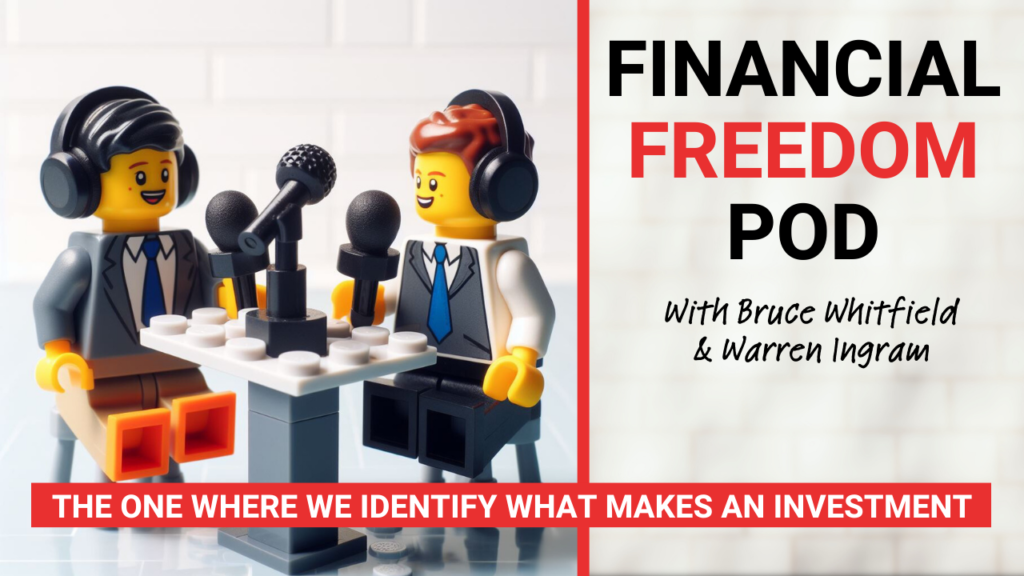


By Warren Ingram, CFP®
Congratulations on taking the first step towards securing your financial freedom! Investing can be a powerful tool to grow wealth over time, but having a clear understanding and a well-thought-out strategy is essential. This guide will walk you through the basic investing principles, helping you build a solid foundation for your financial freedom journey.
Understanding the Basics:
Before diving into the nitty-gritty of investing, let’s start with some fundamental concepts.
Define Your Goals
Before you invest any money, take some time to define your financial goals. Are you saving for an island holiday, a down payment on a house, planning for your children’s education, or building a nest egg for retirement? Knowing your goals will help shape your investment strategy.
Emergency Fund.
Ensure you have an emergency fund in place before you start investing. This fund should cover three to six months’ worth of living expenses and act as a safety net if the unexpected happens, preventing you from having to use debt or access your investments prematurely.
Risk Tolerance:
Assess your risk tolerance, which is your ability and willingness to withstand fluctuations in the value of your investments. Generally, younger investors can afford to take on more risk since they have more time to recover from market downturns.
Getting Started:
Now that you’ve laid the groundwork let’s explore how to get started with your investments.
Educate Yourself:
Take the time to learn the basics of investing. Countless resources, such as educational websites, books, and reputable financial news sources, are available online. Familiarise yourself with terms like stocks (shares), bonds, and mutual funds without getting bogged down by jargon.
Start Small:
It’s okay to start small. You don’t need a large sum of money to begin investing. Many online platforms allow you to start with a modest amount. Consider setting up an automatic investment plan, contributing a fixed amount regularly to build your portfolio gradually.
Diversify Your Portfolio:
Diversification is a crucial principle of investing. Instead of putting all your money into one investment, spread it across different asset classes like stocks (shares), bonds, and possibly real estate. This helps mitigate risk and increases the potential for stable, long-term returns. You should ensure that your investments are adequately diversified across countries so you are not over-invested in one economy.
Keep It Simple:
Any experienced investor will tell you that simplicity is your friend. You don’t need to navigate complex financial instruments or understand intricate market movements. Stick to straightforward investment options and gradually expand your knowledge as you gain more experience.
Long-Term Perspective:
Investing is a marathon, not a sprint. Adopting a long-term perspective can help you navigate the inevitable ups and downs of the market.
Patience Pays Off:
Successful investing requires patience. Resist the urge to react impulsively to short-term market fluctuations. Stay focused on your long-term goals and avoid making emotional decisions based on day-to-day market movements.
Consistent Contributions:
Regularly contribute to your investment portfolio, even during market downturns. This strategy, known as dollar-cost averaging, involves investing a fixed amount at regular intervals, regardless of market conditions. Over time, this approach can reduce the impact of market volatility on your overall portfolio.
Focus on fees:
All quality investments will have a cost. You might be expected to pay annual, transaction, or administration fees. These are necessary to ensure you are well-serviced, and your money is safe. While fees are a fact of life, ensuring your fees are as low as possible and that you are receiving value for money is essential. High fees will destroy wealth if you don’t act to limit them.
Reinvest Dividends:
If you invest in dividend-paying stocks or funds, consider reinvesting those dividends. Reinvesting dividends allows you to buy more shares, compounding your returns over time.
Monitoring and Adjusting:
While a long-term perspective is crucial, it’s also essential to periodically review and adjust your investment strategy. Doing an annual review is sufficient as it prevents you from getting stuck in the noise of market news and investor sentiment.
Rebalancing:
Rebalancing involves adjusting your portfolio back to its original asset allocation. Market fluctuations can cause your portfolio to drift from its initial balance. Periodically rebalance to ensure your investments align with your risk tolerance and financial goals. Your rebalancing interval can be at the same time as your annual review; it should not be too frequent as markets fluctuate considerably over 12 months, and you want to limit the impact of transaction costs on your portfolio.
Conclusion:
Embarking on your investment journey may seem daunting. Still, you can build a solid financial future with a clear understanding of the basics and a patient, disciplined approach. Remember to define your goals, start small, diversify, and maintain a long-term perspective. By following these principles and continuously educating yourself, you’ll be well on your way to financial freedom with confidence. Happy investing!






